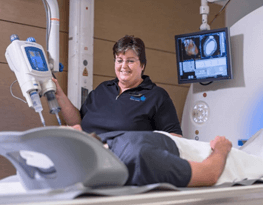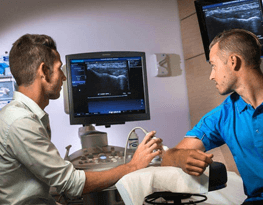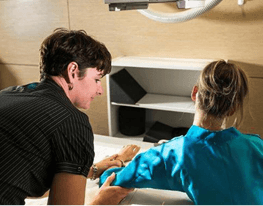
PET-CT stands for Positron Emission Tomography – Computed Tomography. PET-CT is a Nuclear Medicine procedure in which a small amount of a radioactive compound is injected into your body. Images are obtained which reflect the distribution of that compound throughout the body. A low-dose CT scan is taken at the same time, which shows the anatomical location of any significant pathology that may be seen on the PET-CT scan. The ability to fuse anatomical and metabolic information in one scan can significantly improve the sensitivity and diagnostic confidence of the PET-CT scan. This in turn can assist with the staging and management of disease.
Envision’s PET-CT Technology
Envision continues to be at the forefront of medical imaging innovation with the introduction of the new Siemens mCT Flow PET-CT. The Siemens mCT Flow PET/CT is the first of its kind to offer personalised imaging, resulting in reduced scan time, a lower radiation dose and a better patient experience. Envision has secured the first Siemens mCT Flow PET/CT scanner in Perth to offer the latest in medical imaging technology.
PET-CT
What is a positron?
A positron is a fundamental particle similar to an electron, but with a positive charge. During a PET-CT scan, the positron travels less than a millimetre in the body before colliding with an electron to produce a large amount of energy in the form of 2 gamma rays. These gamma rays are similar in nature to x-rays and are emitted exactly 180 degrees apart during the collision. It is these emissions that the PET-CT scanner detects and reconstructs into a recognisable image of the body. The level of radiation exposure from a PET-CT scan is minimal and Envision Medical Imaging has invested in the latest technology and employs professionals trained in radiation reduction techniques so that any radiation exposure is kept as low as possible.
PET-CT
What types of PET-CT scans in Perth does Envision Offer?
Find out more about these scans on their individual pages.







